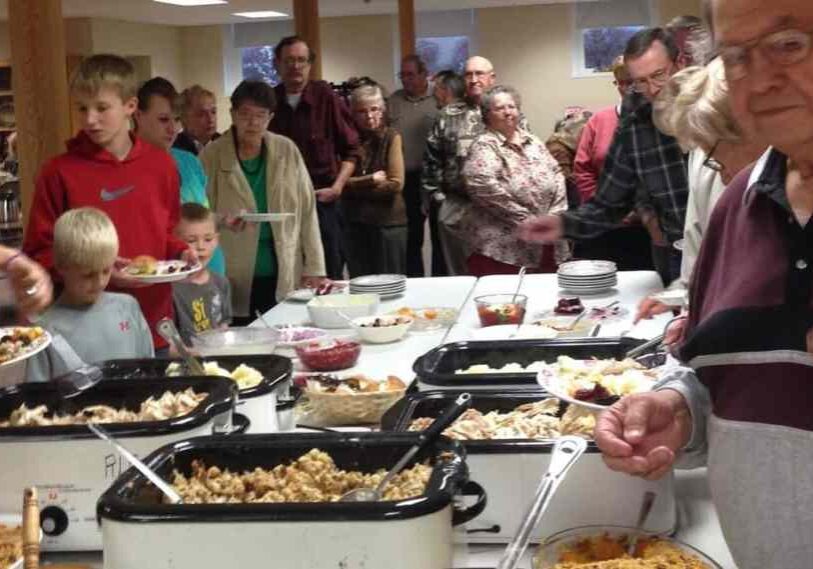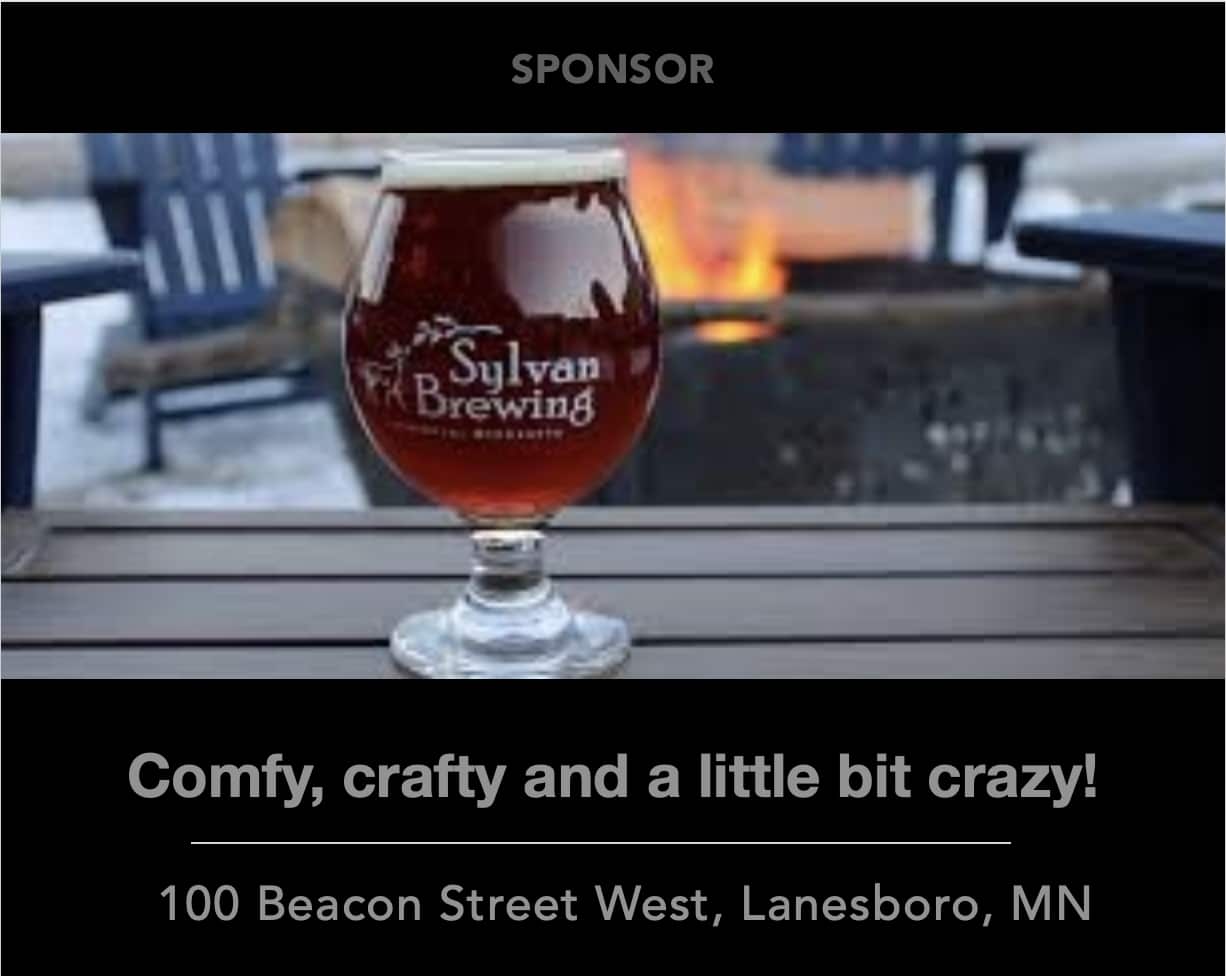Developing Age-Friendly Communities in Fillmore County

FILLMORE COUNTY — Lawrence and Laura Gifford retired to Mabel after living in Rochester for many years. The couple likes the quiet, friendly, safe atmosphere of the town where Laura grew up.
Nonetheless they had some thoughts on how Mabel could be improved.
“Mabel needs a grocery store,” Lawrence stated firmly to the small group assembled at the Community Center in Mabel in November. “And a restaurant.”
Like many people who live in Mabel, the Giffords must travel outside town to buy groceries or go out for a meal. It was one of the needs Lawrence saw that would make Mabel a more livable community.
The couple was participating in a listening session – one of six Age-Friendly Community Conversations that have taken place in Pilot Mound, Chatfield, Rushford, Harmony, Spring Valley and Mabel since late November. Fountain hosts a seventh session scheduled for April.
These sessions have been hosted by Brenda Pohlman, Health Educator at the Fillmore County Public Health Department and local age-friendly community volunteers, as part of a grant from the Statewide Health Improvement Partnership (SHIP), funded by the state of Minnesota.
SHIP is a comprehensive health strategy coordinated across all of Minnesota’s 87 counties and 10 tribal nations. Its goal is to build thriving communities, creating opportunities for all people in Minnesota to live longer, healthier lives. Ninety percent of the nation’s health care costs are for people with chronic conditions, and the majority of those costs are preventable.

Laura and Lawrence Gifford of Mabel attended an Age-Friendly Community listening session at the Community Center in Mabel in November. (Photo by John Torgrimson)
Age-friendly communities
It wasn’t that long ago when each rural town had its coterie of stores, services, and community resources to meet most individual needs. Often times the elderly lived with their extended families.
Fifty years ago, there were drug and hardware stores, doctor and dentist offices, butchers and bakers, and grocery stores in most rural communities. That was when many people worked on the farm or in town and most of their needs were met locally.
We’re a more mobile society today, with many of our towns becoming bedroom communities to Rochester, La Crosse, Winona, or Decorah – places we go for employment, shopping and entertainment.
Forty-two percent of workers who live in Fillmore County commute outside the county for employment . In their work-community, they often take advantage of that opportunity to get goods and services, which can have a negative impact on our home economy.
The average commute to work outside the county is 27 minutes one-way. Because of the long days away from their hometown, those who work outside the county are less likely to serve on school boards, city councils, or volunteer for ambulance services.
And according to the 2020 census, 20.8 percent of the population is older than 65, while 9.1 percent of the population lives below the poverty level.
So, how do we meet the competing needs of different parts of our population? Seniors, commuters, families?
“Those are the questions we are trying to ask ourselves,” says Pohlman. “What will it take for people to stay and live here for as long as possible; 10, 20, 30 years from now?”
In July, Fillmore County was recognized as an age-friendly community by the American Association of Retired People (AARP). According to AARP the population of the United States is rapidly aging. By 2030, one of every five people in the U.S. will be 65 or older.

AARP is committed to the Age-Friendly Communities project. Above is the five-year process to gather data, develop a plan of action, and implement an action plan.
AARP says that the common thread among the enrolled Age-Friendly Communities is the belief that the places where we live are more livable, and better able to support people of all ages, when local leaders commit to improving the quality of life for the very young, the very old, and everyone in between.
According to Pohlman, this is the first year in a five-year process. Year-one will focus on gathering information and conducting a community needs assessment, utilizing the listening sessions to gather community input. Pohlman anticipates developing action plans in Phase 2 by winter 2024. Years 3-5 will involve implementing the action plans and tracking progress.
“Several communities are very active in this process. Wykoff, Harmony, Chatfield, Fountain, Pilot Mound, Lanesboro, and Mabel, all have advocates that are participating in gathering information,” Pohlman said. “The Southeast Area Agency on Aging is also involved in the project.”
Fillmore County as a city
Living today in Fillmore County, a resident might get groceries in Harmony, do their banking in Lanesboro, get their teeth fixed by a dentist in Rushford, go to church in rural Fillmore County, and take out books at the library in Preston. Services are scattered amongst several communities.

Health Educator Brenda Pohlman of the Fillmore County Public Health Department is leading the project from a grant with the Statewide Health Improvement Partnership funded by the state of Minnesota. (Photo by John Torgrimson)
At the Mabel session in November, participants identified Transportation; Communication and Information; and Health Services and Community Support as priority needs.
Transportation: Transportation focuses on ways people move within a community. This can include walking, bicycling, driving, using motorized accessibility devices, buses, taxi services, shuttles, ride sharing, or transportation for people with disabilities. Some of the questions asked were: How will seniors get to their medical appointments? Will our roads be safe and drivable? Are there ride sharing or public transportation opportunities?
Communication and Information: Age-friendly communities recognize that information needs to be shared through a variety of methods. Some of the questions asked were: How do I find out about what resources are available in my community? Is there a clearinghouse for information I can access to get information about services in my town? If I don’t use the internet, how will I get information about what is happening in my community?
Health Services and Community Supports: At some point every person needs some help. It’s important that assistance and care be available nearby, but it’s equally important that it be accessible and affordable. Some questions asked were: Will pharmacies and health clinics still be available locally 10 or 20 years from now? Some clinics are having trouble attracting family practitioners to practice here. How do we attract doctors and other health practitioners to work and live in our small towns? What home-health and chore services are available?
Additional domain topics for discussion included:
- Outdoor Spaces and Buildings. People of all ages need and enjoy places to gather indoors and out. Outdoor lighting, ADA accessible spaces, and green spaces are key elements to a livable community.
- Housing. The vast majority of older adults want to reside in their current home or community for as long as possible. Accessibility, space and proximity to services are issues.
- Social Participation. Regardless of a person’s age, loneliness is often as debilitating as a health condition or chronic illness. How do we create opportunities for social interaction.
- Respect and Inclusion. Everyone wants to feel valued. Intergenerational gatherings are a great way to bring old and young together. Opportunities need to be created for social interaction.
- Civic Participation and Employment. An age-friendly community encourages older people to be actively engaged in community life. Opportunities for residents to work for pay or volunteer their skills need to be created.
Pohlman reminds residents that they can get involved in this project, which is designed for adults of all ages and intended to capture meaningful feedback about ways we can improve the lives of adults.
For Fillmore County information or to volunteer locally, email Brenda Pholman or call 507-765-2139. Statewide Age-Friendly Minnesota resources are available here.






